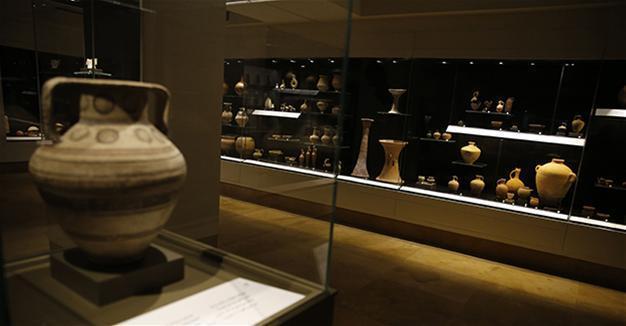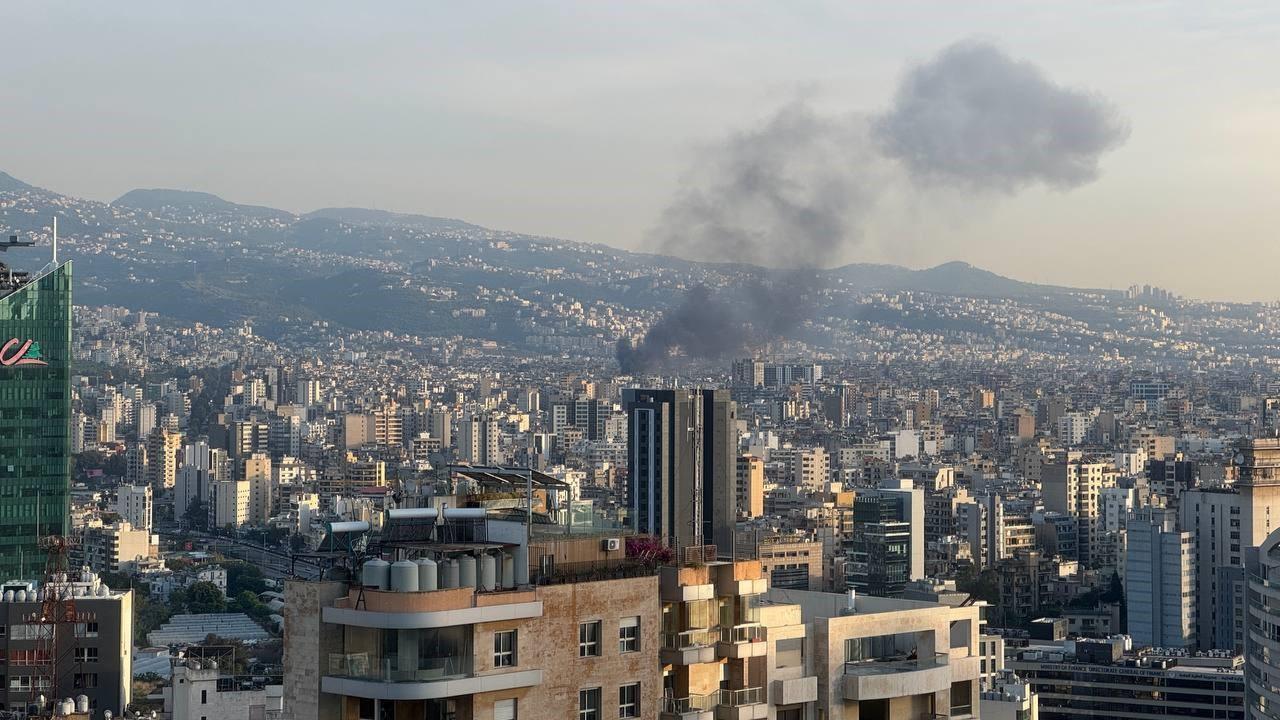Lebanon’s national museum reveals long-hidden treasures
BEIRUT - Agence France-Presse

AFP photo
Beirut’s National Museum has opened its basement of ancient treasures for the first time in four decades to show the public its stunning array of funerary art, including the world’s largest collection of anthropoid sarcophogi.The new exhibition’s 520 pieces range from the Paleolithic period to the Ottoman Empire. They include Phoenician stelae and rare medieval Christian mummies along with the anthropoid coffins, which display a human face on the sarcophogus and were long a standard for the elite.
Some of the items have never before been on public display.
Other pieces have not been shown since the 1970s, when the museum was forced to shut down because it sat on the frontline that ran through the city during Lebanon’s 1975-1990 civil war.
“This is a lesson in courage and hope because 41 years after the museum was closed in 1975, we today are able to receive visitors on three floors,” says museum director Anne-Marie Maila Afeiche.
The archaeological museum was renovated after the years of fighting and shelling damaged its building and exhibits, and reopened in the 1990s. But the current exhibit is the first time its basement has been open since the civil war.
Among the treasures of often-breathtaking beauty is a fragment of a Roman sarcophagus found in Beirut that depicts the myth of Icarus, who is shown alongside his father Daedalus, making his ill-fated wings.
Another gem is an extraordinary hypogeum, an underground tomb, accidentally discovered by a farmer in the Tyre region in 1937.
It is covered with restored frescoes inspired by Greek mythology, including a scene of Priam on bended knee begging Achilles to return the body of Hector.
“It was essential to show the public this heritage, which belongs to Lebanon and humanity, that was lying in our storage,” said Afeiche.
All of the exhibits on display in the museum were excavated across Lebanon, which is rich with historical sites and artifacts.
They include a premolar from 70,000 BC belonging to the first known example of a homo sapiens in Lebanon, and stretch through to an 1830 Ottoman stele adorned with a turban.
Among the collection’s flagship displays is a series of Phoenician sarcophagi dating from between the sixth and fourth century BC that were found in the southern region of Sidon.
“We’re exhibiting 31 of these sarcophagi at the moment,” which mix Greek and Egyptian styles, said Afeiche, noting that some of the sarcophagi found in Sidon are currently displayed in the Louvre. This is “the largest collection of anthropoid sarcophagi in the world,” she added.
But perhaps the most striking part of the exhibit is the unprecedented display of three mummies found in 1989 by cavers in the Qadisha Valley.
The area is a UNESCO World Heritage site and its cave-pocked sheer rock faces provided refuge for Maronite Christians persecuted during the Mamluk and Byzantine eras.
“They were discovered in a cave along with eight naturally mummified bodies” wearing the clothes of of women and children, in some cases the 13th-century silk embroidery still intact. Around them were nuts, onion skins, ceramics, bronze tools and documents written in Arabic and Syriac.
“They were psalms and liturgical chants that showed that these were Christians who had taken refuge in this cave,” said Afeiche.
The three mummified bodies are particularly rare as Lebanon does not have a tradition of mummification, according to Marco Samadelli, director of the EURAC center in Italy, who offered his expertise to help conserve the unique mummies.
Italy contributed 1.02 million euros to the project of restoring the museum’s basement and collection, along with the expertise of leading archeologists including Antonio Giannarusti.
Even with the basement now open, the museum’s storage areas contain plenty of undisplayed pieces and the culture ministry has plans for a new history museum in Beirut as well as museums in both Sidon and Tyre.
The new exhibition provides a timeline of burial techniques, from a 6000 BC Neolithic cradle tomb to a 4BC Chalcolithic burial jar found in Byblos.
Phoenician urns holding cremated remains are exhibited alongside a Byzantine-era tomb decorated with the face of the Virgin Mary from 440 A.D.
“We believe this is the oldest representation of the Virgin discovered to date in Lebanon,” said Afeiche.
The largest is the hypogeum from Tyre, with frescos reminiscent of Pompeii. One of its sides features an inscription: “Be brave, no one is immortal.”
















